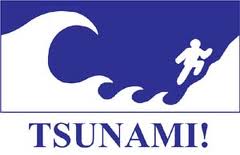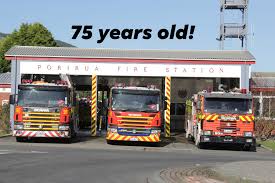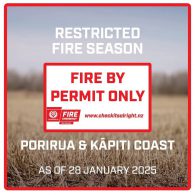 A powerful and ongoing tsunami has been sweeping into New Zealand, prompting a national civil defence emergency but so far sparing the country from injury or damage.The tsunami raced across the Pacific with the speed of a jetliner following a massive 8.8 magnitude earthquake just off the Chile coast yesterday.
A powerful and ongoing tsunami has been sweeping into New Zealand, prompting a national civil defence emergency but so far sparing the country from injury or damage.The tsunami raced across the Pacific with the speed of a jetliner following a massive 8.8 magnitude earthquake just off the Chile coast yesterday.Civil Defence, operating out of the emergency bunker under Parliament’s Beehive, has urged all New Zealanders to stay away from the coast as surges are expected throughout the day.
“There may also be strong surges and rapid rises in sea level in some places. The situation continues to be closely monitored.”
They say wave activity “appears to be stabilised”.
Strong surges of water and waves, up to 1.5 metre high, have hit beaches and harbours from the Chatham Islands to areas all along the east coast of the North and South Islands.
There have been numerous reports of people heading to the coast to watch the tsunami.
Coastguard Northern Region duty officer John Cowan, said people should head to high ground.
“Stay away from the beaches. Don’t go out on the water and if you are already out on the water up anchor and head to deeper water at least half a mile off shore.”
Dunedin Police are patrolling the eastern coastline to ensure that people keep away from beaches and low lying coastal areas following a national tsunami warning.
“Information suggests that it’s possible that larger waves may hit the coast over the coming hours. The police want to ensure people will be safe rather than sorry, and ask that they take sensible precautions,” said Dunedin Emergency Response Commander, Inspector Alastair Dickie.
South Otago police are also patrolling around beach areas to ensure that people stay away from the coast.
Police remind Otago people who live near the coast to be mindful of civil defence advice issued earlier in the day.
On the Northland coast the small Tutukaka harbour has been turned into a “washing machine” as the surge floods in.
Further south the Marsden Point Oil Refinery, right on the coast, was briefly put in an emergency shutdown while Ports of Auckland closed the nation’s biggest port. Around 100 vessels, including Dawn Princess, left wharves to wait out the surges in the Rangitito Channel.
The ocean at a beach south of Christchurch receded dramatically, leaving fish stranded on the sand.
Press reporter Martin van Beynen said the water at Purau Bay in Banks Peninsula withdrew over about five minutes. On some parts of the deserted beach the water was 100 metres from where it should have been.
“You could see the odd fish flapping about on the sand,” he told Stuff.
The water slowly pushed back in before withdrawing again, he said.
In Timaru, hand-written “cancelled” signs and closed car parks were the first many people visiting Caroline Bay knew of this morning’s tsunami alert.
With the tsunami due to reach the South Canterbury coastline just after 9am, the Sunday morning farmers market on Caroline Bay was cancelled as was a begonia show being held in the Caroline Bay Hall.
A children’s triathlon to be held this afternoon has also been cancelled in line with civil defence advice to stay away from coastal areas for the rest of the day.
In Poverty Bay Whispering Sands Beachfront Motel owner Peter Martin had been watching the sea in Gisborne and said there had been a noticeable drop in the water level.
“The water went out a wee bit and when the water dropped the water came out of the river water … the water’s looking quite dirty,” he said.
“I think now the … sea level’s starting to come back in,” he said.
There had been a voluntary evacuation notice issued but locals were pretty relaxed.
“I don’t think people have gone as crazy as they have the past two times,” he said.
Auckland coastguard radio operator Emma Millen said around 100 boats are floating in the deep water to wait out projected tsunami surges.
“It’s basically all the boats that have been moored in the small bays over the weekend, they had to get out of the shallow water and steam into the harbour,” Ms Millen said.
Around the country many events were cancelled, including the secondary schools dragon boat competition in Wellington, a nude photo shoot at Worser Bay in Wellington, and sports events.
On the Chatham Islands, residents have seen big changes in water level. Chatham Islanders took to what little high ground there is.
Bernadette Malinson, of Flower Pot Bay, on Pitt Island in the Chathams, reported significant surges this morning which emptied the bay and revealed the full height of the piles on the wharf there.
“The bay empties right out. It takes about a minute and a half and then it surges back in, in about the same amount of time,” she told Radio New Zealand.
“The surges have been getting bigger – at least 2m at present.”
The tidal activity, which had been going on all morning, had not caused any damage, she said.
In Akaroa, on Canterbury’s Banks Peninsula, tidal surges of up to 30m were reported.
In the space of 10 minutes, the water receded almost to the swimming pontoon off the main beach in the township and then returned quickly, one witness said. Just as in Pitt Island, the pier in Akaroa was fully exposed.
Specialists said a threat to beaches and small boats existed for the east coasts of the North and South Island, as far around as Puysegur Point on the Southland west coast, and north to Cape Reinga and extending south to Ahipara, on the Far North west coast.
Sea levels along the Gisborne coast had dropped dramatically, prompting authorities to close roads to beaches and clear away sightseers.
Waikanae Beach Holiday Park manager Diane Ross said the sea suddenly receded about 9.20am.
It was almost high tide when the water pulled out to below the low tide mark.
It dropped about 1-1.5 metres in a matter of moments, Ms Ross told Radio New Zealand.
The water went “very, very brown”, indicating that it was being stirred up by swirling currents, she said.
All the holidaymakers at the campground had been evacuated early this morning and were watching the action from a marae at nearby Kaiti Hill.
Gisborne Civil Defence controller John Davies confirmed the witness reports, saying the sea had dropped about a metre and while it had not surged back in, there was “unusual” wave activity happening.
In Hawke’s Bay coastal settlements of Ocean Beach and Waimarama have been evacuated, and police were door-knocking at Haumoana and Te Awanga, warning residents it would be a good idea to leave.
Eleven houses right on the beach at Te Awanga were particularly at risk. One of those residents was recently prosecuted for building an illegal sea wall to stop the heavy seas eroding his backyard.
Civil Defence Minister John Carter was hailing the response to this morning’s tsunami saying last year’s Samoan tsunami alerts, which prompted heavy criticism, had been “a very good learning curve.
“I’m very pleased with the way in which Civil Defence has responded to that and it’s been very evident that the structure right across the board understood the need to improve and has done.”
The communication between Civil Defence and local emergency authorities, such as police, the fire service and regional coast-guards, had been excellent, Mr Carter said.
“The media have also played a great role in helping us with this issue and alerting New Zealanders to the potential risk.”
“All in all it’s a big step up from where we were just four months ago.
Mr Carter spoke to Stuff.co.nz from the Civil Defence bunker, underneath the Beehive.
“We first got notice of the earthquake at about 9pm last night, the system kicked into gear about 11.30 when we got confirmation there was a tsunami and there’s been people here ever since.”
“The challenge is, I guess, there is always the person who thinks ‘I might go have a look’ and if they do it might be the last thing they ever do.
A tsunami was an incredible powerful surge of water which travelled at immense speeds, Mr Carter said.
“If it strikes you won’t survive. Don’t be an idiot.
“It’s your life, if you don’t respect your life at least tell others to stay away.
“People wouldn’t work into a fire, why in the world would they walk into an energy surge of water and risk killing themselves.”
Ken Gledhill of GNS Science said New Zealand was not in the main beam of the tsunami, which was headed for Japan.
Stuff.co.nz



 CHECK ITS ALRIGHT
CHECK ITS ALRIGHT